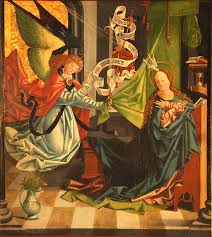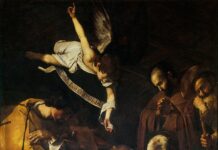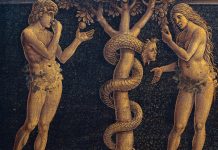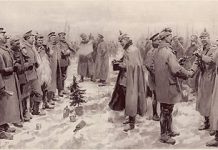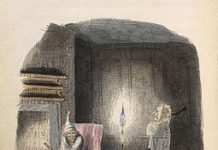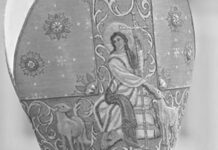John of Damascus was born around the year 675 or 676, into a cultural milieu which was rather intriguing. Although given much prominence in Byzantine Theology, he grew up in the Islamic culture, and although he came from a Christian family, he was appointed the Treasurer of the Caliphate. Court life did not really leave its spell on John. As soon as the opportunity presented itself, he adopted the monastic life and entered the Mar Saba monastery, close to Jerusalem. At this monastery John spent his life engaging himself in his spiritual and literary endeavours, as well as doing some pastoral work.
John is regarded as the Doctor of the Assumption simply because he wrote so eloquently about this doctrine. Here we cannot but refer to one of his extraordinary homilies which Pope Pius XII cited in his definition of the Assumption of Mary as a dogma of faith. What strikes the eye in this homily is the fact that Mary died or “fell asleep” before her body was actually assumed into heaven and experienced its re-unification with her soul in the heavenly glory.
But even though, according to nature, your most holy and happy soul is separated from your most blessed and stainless body and the body as usual is delivered to the tomb, it will not remain in the power of death and is not subject to decay.
For just as her virginity remained inviolate while giving birth, when she departed her body was preserved from destruction and only taken to a better and more divine tabernacle, which is not subject to any death . . . Hence I will call her holy passing not death, but falling asleep [dormition] or departure, or better still, arrival….
“Your stainless and wholly immaculate body has not been left on earth; the Queen, the Mistress, the Mother of God who has truly given birth to God has been translated to the royal palaces of heaven. “Angels and archangels have borne you upwards, the impure spirits of the air have trembled at your ascension. The air is purified, the ether sanctified by your passing through them. . . the powers meet you with sacred hymns and much solemnity, saying something like this: Who is she that comes forth as the morning rising, fair as the moon, elect like the sun? [cf. Song of Songs 6:9] How you have blossomed forth, how sweet you have become! You are the flower of the field, a lily among the thorns [Song of Songs 2.1] . . .
Not like Elijah have you entered heaven, not like Paul have you been rapt to the third heaven; no, you have penetrated even to the royal throne of your Son himself . . . a blessing for the world, a sanctification of the universe, refreshment for those who are tired, comfort for the sorrowing, healing for the sick, a port for those in danger, pardon for sinners, soothing balm for the oppressed, quick help for all who pray to you. . .
“Good Mistress, graciously look down on us; direct and guide our destinies wheresoever you will. Pacify the storm of our wicked passions, guide us into the quiet port of the divine will and grant us the blessedness to come.”
Moreover John was a staunch defender of icons, and the Eastern Orthodox Church rightly highlights this aspect of John’s life. Considering the view that on the one hand Islam, like the Jewish faith, rejected cult images; and on the other hand, he was greatly challenged by those in the Christian world who opposed icons John had to explain in detail his position in favour of the veneration of images.
In other ages God had not been represented in images, being incorporate and faceless. But since God has now been seen in the flesh, and lived among men, I represent that part of God which is visible. I do not venerate matter, but the Creator of matter, who became matter for my sake and deigned to live in matter and bring about my salvation through matter. I will not cease therefore to venerate that matter through which my salvation was achieved. But I do not venerate it in absolute terms as God! How could that which, from non-existence, has been given existence, be God?… But I also venerate and respect all the rest of matter which has brought me salvation, since it is full of energy and Holy graces. Is not the wood of the Cross, three times blessed, matter?… And the ink, and the most Holy Book of the Gospels, are they not matter? The redeeming altar which dispenses the Bread of life, is it not matter?… And, before all else, are not the flesh and blood of Our Lord matter? Either we must suppress the sacred nature of all these things, or we must concede to the tradition of the Church the veneration of the images of God and that of the friends of God who are sanctified by the name they bear, and for this reason are possessed by the grace of the Holy Spirit. Do not, therefore, offend matter: it is not contemptible, because nothing that God has made is contemptible.
As Pope Benedict XVI said in his catechesis on the saint of Wednesday 6. 2009, John Damascene was also among the first to distinguish, in the cult, both public and private, of the Christians, between worship (latreia), and veneration (proskynesis): the first can only be offered to God, spiritual above all else, the second, on the other hand, can make use of an image to address the one whom the image represents.
After this clear cut distinction between worship and veneration John said that the veneration of the relics of saints tells us that these people are partakers of Christ’s Resurrection and they live with Him. He says: First of all (let us venerate) those among whom God reposed, he alone Holy, who reposes among the Saints (cf. Is 57: 15), such as the Mother of God and all the Saints. These are those who, as far as possible, have made themselves similar to God by their own will; and by God’s presence in them, and his help, they are really called gods (cf. Ps 82[81]: 6), not by their nature, but by contingency, just as the red-hot iron is called fire, not by its nature, but by contingency and its participation in the fire. He says in fact : you shall be holy, because I am Holy (cf. Lv 19: 2)” (III, 33, col. 1352 a).
For John this can be so because God, who is good, and greater than any goodness, was not content with the contemplation of himself, but desired that there should be beings benefited by him, who might share in his goodness: therefore he created from nothing all things, visible and invisible, including man, a reality visible and invisible. And he created him envisaging him and creating him as a being capable of thought (ennoema ergon), enriched with the word (logo[i] sympleroumenon), and orientated towards the spirit (B) (II, 2, pg 94, col. 865a).
To consolidate his position John Damascene said: We must allow ourselves to be filled with wonder (thaumazein) at all the works of Providence (tes pronoias erga), to accept and praise them all, overcoming any temptation to identify in them aspects which to many may seem unjust or iniquitous, (adika), and admitting instead that the project of God (pronoia) goes beyond man’s capacity to know or to understand (agnoston kai akatalepton), while on the contrary only he may know our thoughts, our actions, and even our future (ii, 29, pg 94, col. 964c).
Within his view, what is created there is the good, the beautiful and the true. Hence, our nature, wounded by sin, direly needs to be strengthened and renewed by the Son of God made man. Through Christ we all have our well-being. John thus writes: It was necessary for nature to be strengthened and renewed, and for the path of virtue to be indicated and effectively taught (didachthenai aretes hodòn), the path that leads away from corruption and towards eternal life…. So there appeared on the horizon of history the great sea of love that God bears towards man (philanthropias pelagos)… He himself, the Creator and the Lord, fought for his Creation, transmitting to it his teaching by example…. And so the Son of God, while still remaining in the form of God, lowered the skies and descended… to his servants… achieving the newest thing of all, the only thing really new under the sun, through which he manifested the infinite power of God (III, 1, pg 94, col. 981c-984b).
Grant, we pray, O Lord, that we may be helped by the prayers of the Priest Saint John Damascene, so that the true faith, which he excelled in teaching, may always be our light and our strength. Through our Lord Jesus Christ, your Son, who lives and reigns with you in the unity of the Holy Spirit, God, for ever and ever. Amen.

